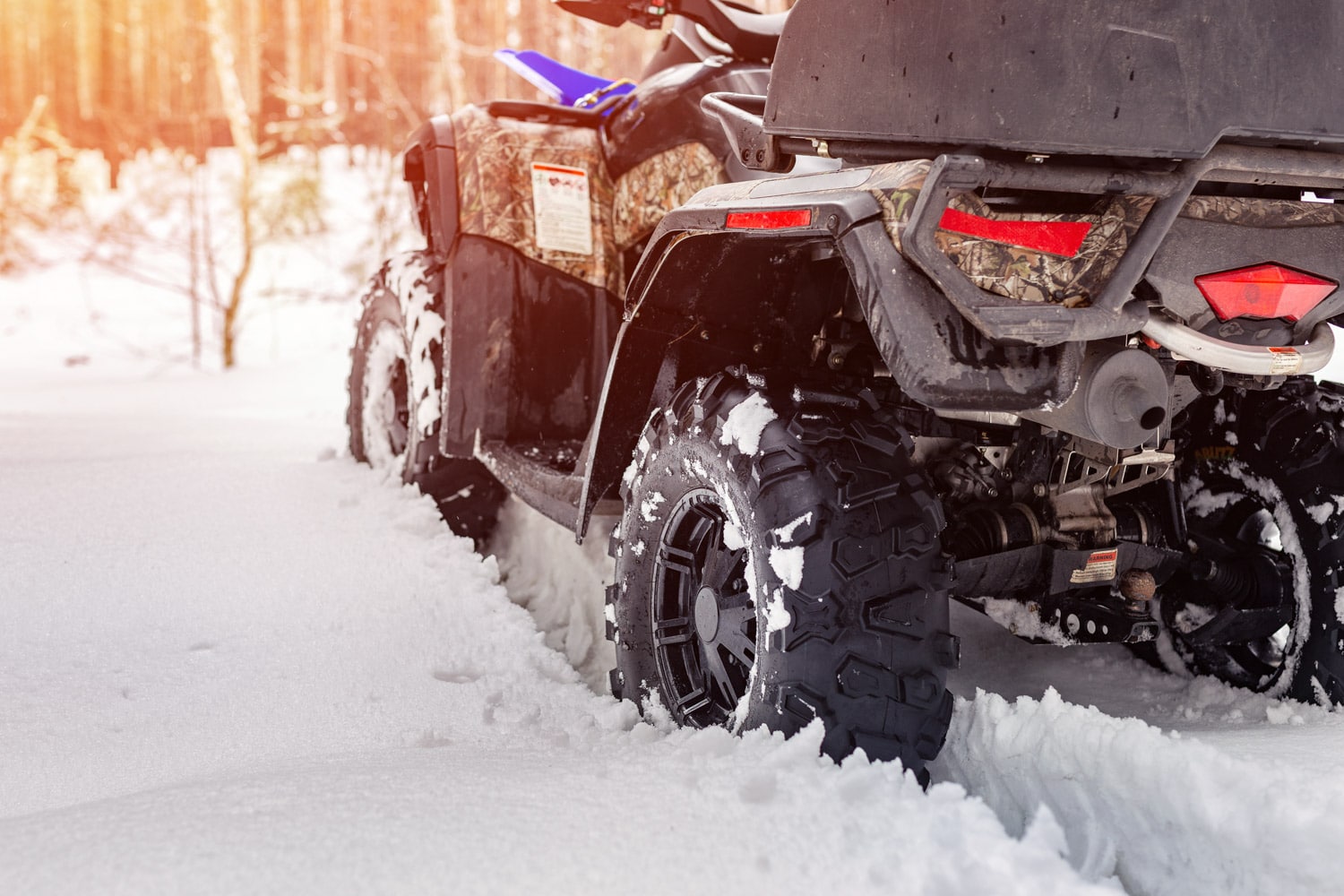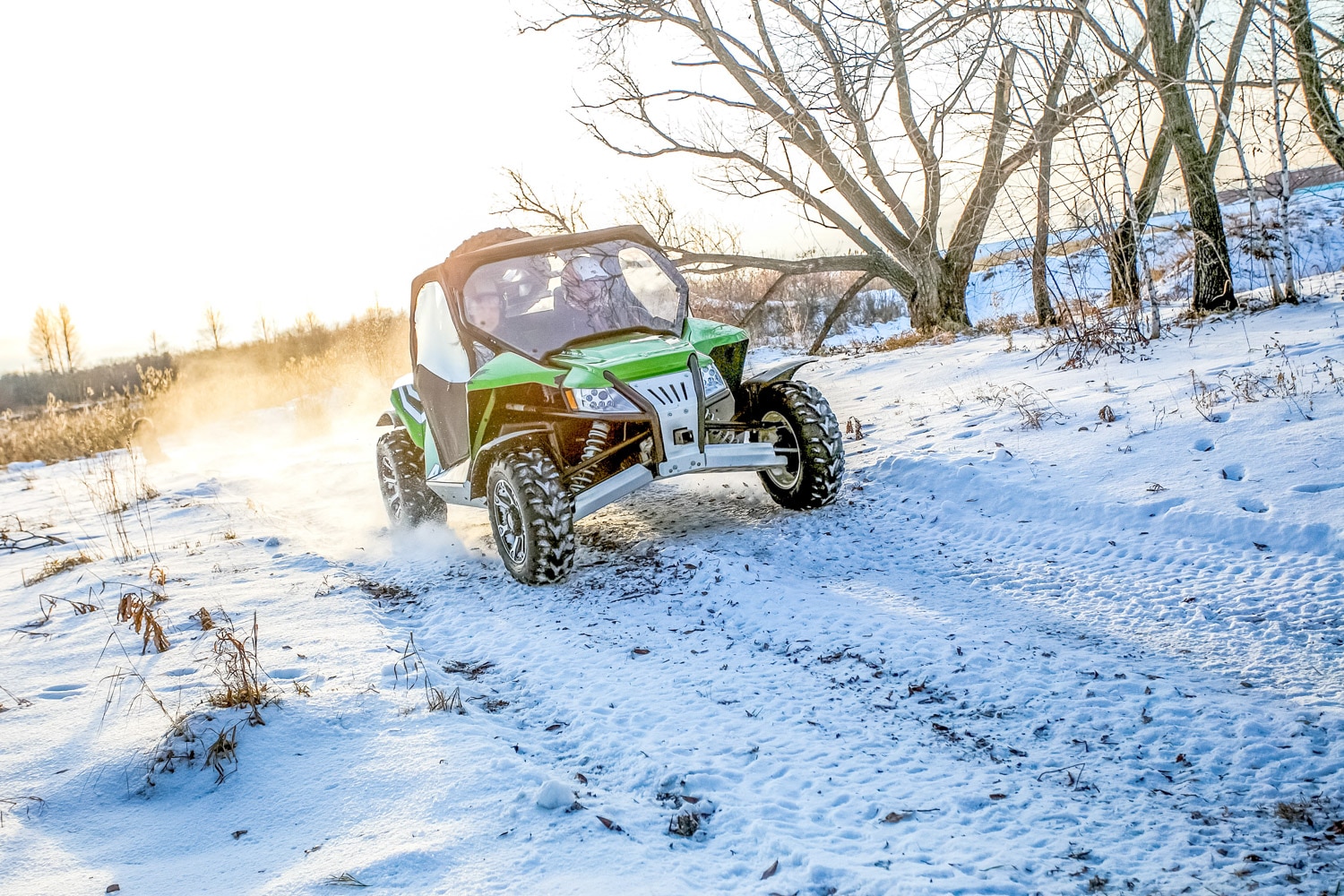Off-road vehicles (ORVs) are very popular in Canada. Nature lovers are well-served thanks to a vast network of ATV and snowmobile trails. And that buzz has only grown lately, probably because people felt the need to get some fresh air following the lengthy lockdown of COVID-19.
Many new users have joined the ranks of long-time enthusiasts, to such an extent that some ORV dealers have been out of stock of new vehicles for several months.
But whether you are a new user or an experienced rider of this beautiful activity, and whether you own a new or used vehicle, it is essential to remember that safety comes first. Here are the main rules and behaviors to practice at all times for safe driving on trails.
Get to know your ORV
Take the time to read your machine’s owner’s manual; it will tell you about various topics such as the maximum load the vehicle can carry, maximum luggage rack capacities, maximum towing capacity, and more. Discuss it with your dealer; you will appreciate the vital information you can get regarding your vehicle. Make sure you know your machine better BEFORE you use it.
Wear your helmet at all times. Take the time to test your vehicle thoroughly and master its handling sufficiently before setting out on a ride. Make sure you are comfortable piloting it and ensure your passengers are comfortable too. Off-road vehicle driving courses are offered everywhere in Canada, which may also be an interesting option to consider (mandatory for 16-17 year olds and to drive an ATV with a booster seat in Quebec).
Finally, check the mechanical condition of your ORV and ensure you bring some basic tools and recommended spare parts with you, such as a CVT belt, for example.

Plan your outings
Make a route for yourself if you are planning a long ride. Use a map, plan your course, and schedule stops to eat, use the bathroom, rest, warm up, refuel, or pack enough gasoline to get to your destination. Keep in mind that you will be on a trail, very often far from civilization. A planned outing will help you prevent a lot of inconveniences.
Notify a loved one
Once your route has been determined, notify someone around you, mentioning the itinerary you will be taking. This precaution is all the more necessary if you are going alone. Knowing where you are going will reassure everyone and help emergency responders locate you faster if something goes wrong.
Favor maintained and marked trails
Maintained snowmobile and ATV trails offer ORV enthusiasts a significant advantage by allowing them to ride on well-maintained, marked, monitored, known, and experienced trails by thousands of other enthusiasts. They are also served by clubhouses where you can take a break, eat, warm up, etc., which is another significant advantage.
Signage and trail monitors will allow you to venture out more safely, among other things, by moderating speed enthusiasts. Speed limit signs will regularly remind them to obey the speed limits. Signage will also improve safety around intersections and public road crossings while showing you the way and the distances to reach your destination.
Avoid driving when visibility is reduced
It can be fun to ride at night, in heavy rain or snowstorm, but these conditions significantly increase your chances of swerving, skidding, or having an accident. In reduced visibility, the state of the trails will be practically unknown to you. It will prevent you from adequately judging the obstacles to be crossed, from knowing the condition of the trail’s surface, from evaluating the braking distance, curves, etc. If you must ride in these conditions, reduce your speed and make sure you can see well ahead and be seen by turning on your headlights and sidelights, which should be on at all times anyway.
Plan to dress according to the weather conditions
In winter, the risk of frostbite is very present and seems so easy to avoid. Yet every winter, many enthusiasts experience frostbite on their toes and fingers. Several more suffer skin injuries from the sun and insects in the summer or eye injuries from dust, stones, and mud splashes. Make sure you are well dressed to face the weather conditions and the risks on the trail during your rides. Winter or summer, always wear a helmet and safety goggles if your helmet does not have a visor. A bee hitting one eye at 50 km/h is a harrowing experience, that is for sure.
Safe behavior on the trail
All the advice mentioned above is worthless if user behavior is questionable. Everyone should keep in mind that this activity is practiced in the community; that is to say, other riders circulate in the same place and at the same time as you on the trails. And others will do the same after your passage. A minimum of safe behavior, common sense, and good manners are necessary to practice this activity safely and thus ensure its sustainability. Without going into details, here are the main safety behaviors that any ORV user should adhere to:
- Never drive while impaired (drugs, alcohol, medication)
- Always obey the signs and speed limits
- Cross public roads where signs allow it
- Respect residential areas by reducing speed and noise
- Stay on the trails and respect private property
- Make sure to ride where it is authorized to do so
- Keep the vehicle’s headlights and side lamps on at all times
- Maintain a safe distance between your machine and the one in front of you
- Stay vigilant near bodies of water
- Be courteous and take the time to enjoy the ride: the trail is not a running track
- Leave the premises in the same condition as on arrival or better
Quebec Off-Road Vehicle Act (LVHR)
In closing, it should be mentioned that the practice of off-road activity is governed by the Act Respecting Off-Highway Vehicles (LVHR) in Quebec. It has been updated recently, and several notable changes have been in effect since December 2020. Here are a few noteworthy:
- Driving license
As of September 10, 2021, a valid driver’s license will be required to drive an ORV on trails, on public or municipal land; this requirement was already applicable to operate an ORV on a public road. And although the Criminal Code also applied concerning the driving of an ORV while impaired, the administrative measures of the Highway Safety Code will now be in force on trails, on private land owned by a municipality, and on public lands. This implies, for example, that the zero alcohol rule for young drivers and the license suspension and revocation measures provided for in the Highway Safety Code are now applicable in these places. Police officers have the authority to immediately suspend a driver’s license, in addition to issuing a fine of $ 300. In summary, the LVHR provides mechanisms identical to those of the Highway Safety Code.
- Off-road vehicles
Quads (ATVs and SSVs), snowmobiles, and off-road motorcycles, including motocross, are now supervised by the LVHR, regardless of their size, weight, or dimensions.
- Traffic areas
Trail neighbors must tolerate the inconveniences caused by the ORV circulation to the extent of the legality. However, the speed within 100 meters of dwellings must not exceed 50 km / h and 30 km / h within 30 meters. Anyone who rides an ORV faster than the prescribed maximum speed commits an offense and is liable to a fine.
- Insurance
As of June 29, 2021, all off-road vehicle owners must have liability insurance coverage of at least $ 1,000,000.
In conclusion, Quebec’s LVHR has been undergoing an overhaul for some time. This new law aims to ensure public safety and promote harmonious cohabitation between recreational off-road vehicles and other territory users. Several other updates are coming soon.
ATVs and snowmobiles are unique and invaluable hobbies; everyone must make the necessary efforts to ensure that ORV riding remains safe and accessible to all.






